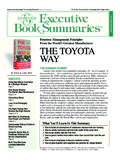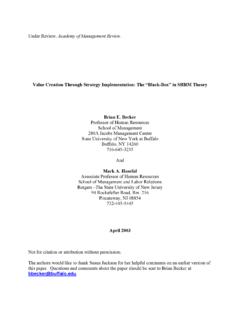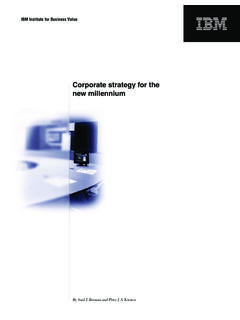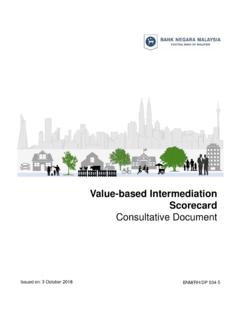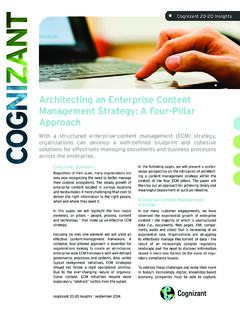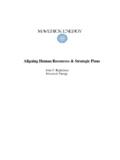Transcription of FILE: STRATEGIC MANAGEMENT Converting Intangible Assets ...
1 Published by Soundview Executive Book Summaries, Box 1053, Concordville, Pennsylvania 19331 USA 2004 Soundview Executive Book Summaries All rights reserved. Reproduction in whole or part is Intangible Assets Into Tangible OutcomesSTRATEGYMAPSTHE SUMMARY IN BRIEFMore than 75 percent of the average company s market value comesfrom Intangible Assets that traditional metrics don t measure. The BalancedScorecard is a revolutionary performance measurement system that allowsorganizations to quantify critical Intangible Assets , such as people, informa-tion and culture. Now the people who first developed the BalancedScorecard, Robert S. Kaplan and David P. Norton, have created a powerfulnew tool based on their ongoing research. The strategy map allows compa-nies to describe the links between Intangible Assets and value creation soall aspects of strategy can be implemented in a manner that ensures sus-tained value strategy map allows managers to align investments in people, tech-nology and organization capital for the greatest impact.
2 By paying closeattention to improving internal processes such as operations, customer rela-tionships, innovation and culture and making proper investments inintangible Assets human capital, information capital, and organizationcapital MANAGEMENT can implement a structured plan to achieve Knowledge for the Busy Executive 26, No. 4 (2 parts) Part 1, April 2004 Order # 26-09 CONTENTSS trategy MapsPages 2, 3 value -Creating ProcessesPages 3, 4, 5 Manage RiskPage 3 Innovation ThroughOperationsPage 4 Intangible AssetsPages 5, 6, 7 Triple Bottom-Line Strategy MapPage 5 Building Strategies andStrategy MapsPages 7, 8 IBM s Complete CustomerSolutionPage 8By Robert S. Kaplan andDavid P. Norton FILE: STRATEGIC MANAGEMENT What You ll Learn In This Summary Which organizational processes are most critical for enhancing produc-tivity. How to understand a strategy map and the cause-and-effect relation-ships between processes and Intangible Assets .
3 How to manage internal processes to achieve your differentiated valueproposition. How to define and measure Intangible Assets and then integrate andalign them with strategy for true value . How to develop a customized strategy map for your company based onyour unique strategy and goals. How to plan an implementation campaign based on the strategy MapsA strategy describes how an organization can createsustained value for its shareholders, customers and com-munities. Most organizations have different methods ofcommunication, alignment and implementation, but theBalanced Scorecard (BSC) is an effective way for non-profits and public-sector organizations to describestrategies for creating value . The BSC includes the lag-ging indicators of financial performance and customervalue proposition, and the leading indicators of internalprocesses as well as learning and With the Strategy Map The strategy map is a visual framework of the cause-and-effect relationships among the components of anorganization s strategy, and it is used to integrate thefour perspectives of a BSC financial, customer, inter-nal, and learning and growth.
4 It provides a uniform andconsistent way to describe strategy so the objectives andmeasures on the BSC can be established and illustrates the time-based dynamics of a strategy andthe relationships that link desired outcomes in the cus-tomer and financial perspectives to outstanding perfor-mance in critical internal processes. These processes inturn create and deliver the organization s value proposi-tion to targeted customers and promote productivityobjectives in the financial perspective. The strategy mapalso identifies the specific capabilities in the organiza-tion s Intangible Assets that are required for deliveringexceptional performance in critical internal strategy map is based on several principles, includ-ing the following: Strategy balances the contradictory forces ofshort-term financial objectives for cost reduction andincreased productivity, and the long-term objective ofprofitable revenue growth. Strategy is based on a differentiated customerSTRATEGY MAPSby Robert S.
5 Kaplan and David P. Norton THECOMPLETESUMMARYFor Additional Information on the authors, go to: by Soundview Executive Book Summaries(ISSN 0747-2196), Box 1053, Concordville, PA 19331 USA, a division of Concentrated Knowledge Corporation. Published monthly. Subscriptions: $195 per year in ,Canada & Mexico, and $275 to all other countries. Periodicals postage paid at Concordville, PA and additional :Send address changes to Soundview, Box 1053, Concordville, PA 19331. Copyright 2004 bySoundview Executive Book ailable formats:Summaries are available in print, audio and electronic formats. To subscribe, call us at1-800-521-1227 (1-610-558-9495 outside & Canada), or order on the Internet at discounts and Corporate Site Licenses are also Book Summaries GREERMCPHADEN Senior Contributing EditorDEBRAA. DEPRINZIO Art and DesignCHRISLAUER Managing EditorCHRISTOPHERG. MURRAY Editor-in-ChiefGEORGEY. CLEMENT PublisherSoundview Executive Book Summaries 2 The authors:Robert S.
6 Kaplan is the Marvin BowerProfessor of Leadership Development at Harvard BusinessSchool and chairman of the Balanced ScorecardCollaborative. David P. Norton is co-founder and presidentof the Balanced Scorecard Copyright 2004 by Harvard Business SchoolPublishing Corp. Summarized by permission of the pub-lisher, Harvard Business School Press, 60 Harvard Way,Boston, MA 02163. 454 pages. $ ISBN Copyright 2004 by Soundview ExecutiveBook Summaries. , 800-521-1227,610-558-9495.(continued on page 3)A Strategy Map Represents How the Organization Creates ValueLong-TermShareholder ValueFinancialPerspectiveCustomerPerspec tiveInternalPerspectiveLearning andGrowthPerspectiveOperations ManagementProcesses Supply Distribution Production Risk ManagementCustomer ManagementProcesses Selection Retention Acquisition GrowthInnovationProcesses Opportunity ID Design/Develop R&D Portfolio LaunchRegulatory and SocialProcesses Environment Employment Safety and Health CommunityHuman CapitalInformation CapitalOrganization CapitalLeadershipCultureAlignmentTeamwor kCustomer value PropositionProduct/Services AttributesPriceQualityAvailabilitySelect ionFunctionalityServicePartnershipBrandR elationshipImageIncrease AssetUtilizationImprove CostStructureProductivity StrategyEnhanceCustomer ValueExpand RevenueOpportunitiesGrowth Strategyvalue
7 Proposition,because satisfying customers is thesource of sustainable value creation. value is created through internal maps and BSCs describe what theorganization hopes to achieve, that is, STRATEGIC themes. Strategy consists of simultaneous, complemen-tary themesor clusters of internal processes that deliv-er benefits at different points in time. STRATEGIC alignment determines the value ofintangible Assets . The three components in the learningand growth perspective are human, information andorganization capital. value -Creating ProcessesThere are a few processes that companies must focuson to deliver a differentiating value proposition and thatare most critical for enhancing productivity and main-taining an organization s franchise to operate. Operations and deliver-ing products and services to customers. Customer and leverag-ing customer relationships. new products, services,processes and relationships. Regulatory and to regulationsand societal expectations and building stronger practicing the art of strategy must identifythe critical few processes that are the most important forcreating and delivering their differentiating customervalue MANAGEMENT ProcessesThere are four ways organizations can improve theiroperations MANAGEMENT processes to deliver goods andservices:1.
8 Develop and sustain supplier suppliers are low-cost, not just low-price. Lowerthe total cost of acquiring goods or services by: workingwith suppliers to achieve just-in-time capability; seekingtheir new ideas and suggestions; outsourcing; and estab-lishing supplier partnerships to provide services directlyto Produce products and the cost ofproduction by continuously improving process quality,process responsiveness, fixed asset utilization, andworking capital Distribute and deliver products and services responsively to customers, lower thecost to serve them, and enhance the quality of Manage more than just avoid income andcash-flow fluctuations. Create shareholder value in waysthat investors cannot accomplish on their own. Reducecosts of financial distress, such as bankruptcy; moderatethe risk faced by important nondiversified investors;decrease taxes; reduce monitoring costs; and lower thecost of MANAGEMENT (ABM) and total qualitymanagement (TQM) are two ways to help employeesmake fundamental improvements in operating processesby determining the cost of a process and then improvingit.
9 The five steps of ABM are:1. Develop the business Establish Provide cost Track the Measure performance for ongoing maps can provide significant value to compa-nies using other quality programs in these four ways:1. They provide explicit and testable causal link-ages between strategy and They establish targets beyond existing best They identify entirely new processes that arecritical for achieving STRATEGIC They set STRATEGIC priorities for process MANAGEMENT ProcessesIn the past, customer MANAGEMENT focused on transac-tions promoting and selling the company s Maps SUMMARYS trategy Maps(continued from page 2)Soundview Executive Book Summaries (continued on page 4)Manage RiskCompanies can manage risk by modifying opera-tions. For example, Microsoft uses an operating poli-cy of employing large numbers of temporary work-ers who can be laid off if business slows built its major theme parks in areas whereweather is generally pleasant and predictable:Anaheim, Calif.
10 , and Orlando, Fla. This lowers thevolatility of theme park revenues due to weather con-ditions. Companies can also take operating actionsto reduce the risk that their products or services willbe made technologically obsolete by competitors orby employee actions that can damage their brandand company Additional Information about Activity-Based MANAGEMENT ,go to: customer relationships was not a priority. Nowthat technology allows customers to launch their owntransactions, the balance of power has shifted to MANAGEMENT processes must help the compa-ny acquire, sustain and grow long-term, profitable rela-tionships with targeted customers. Customer MANAGEMENT must: Select attractive segments, crafta value proposition to appeal to those segments, andcreate a brand image that will attract those segments tothe company s products and services. Acquire the company svalue proposition to the market, secure prospects, con-vert them to customers, and build dealer relationships.

